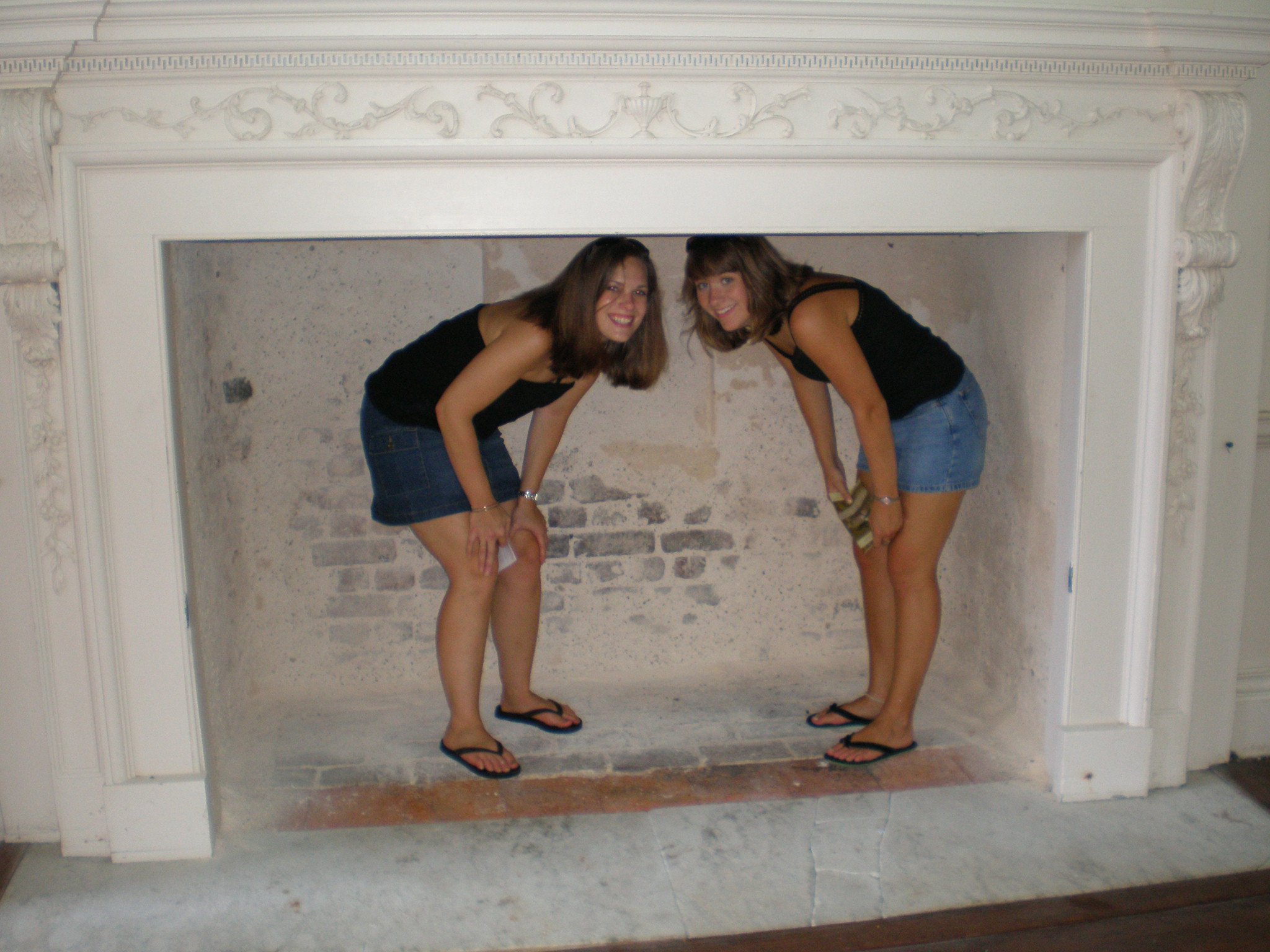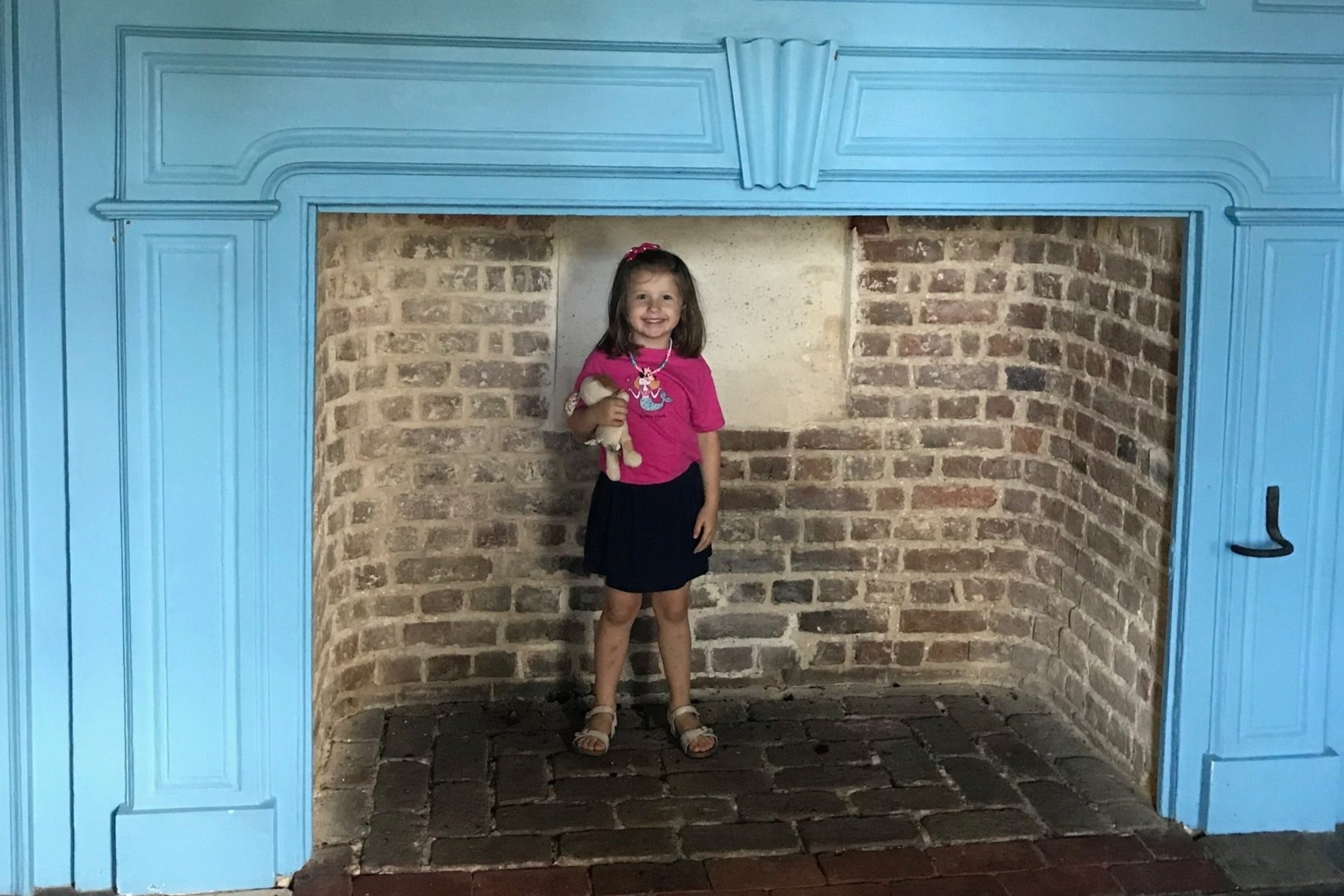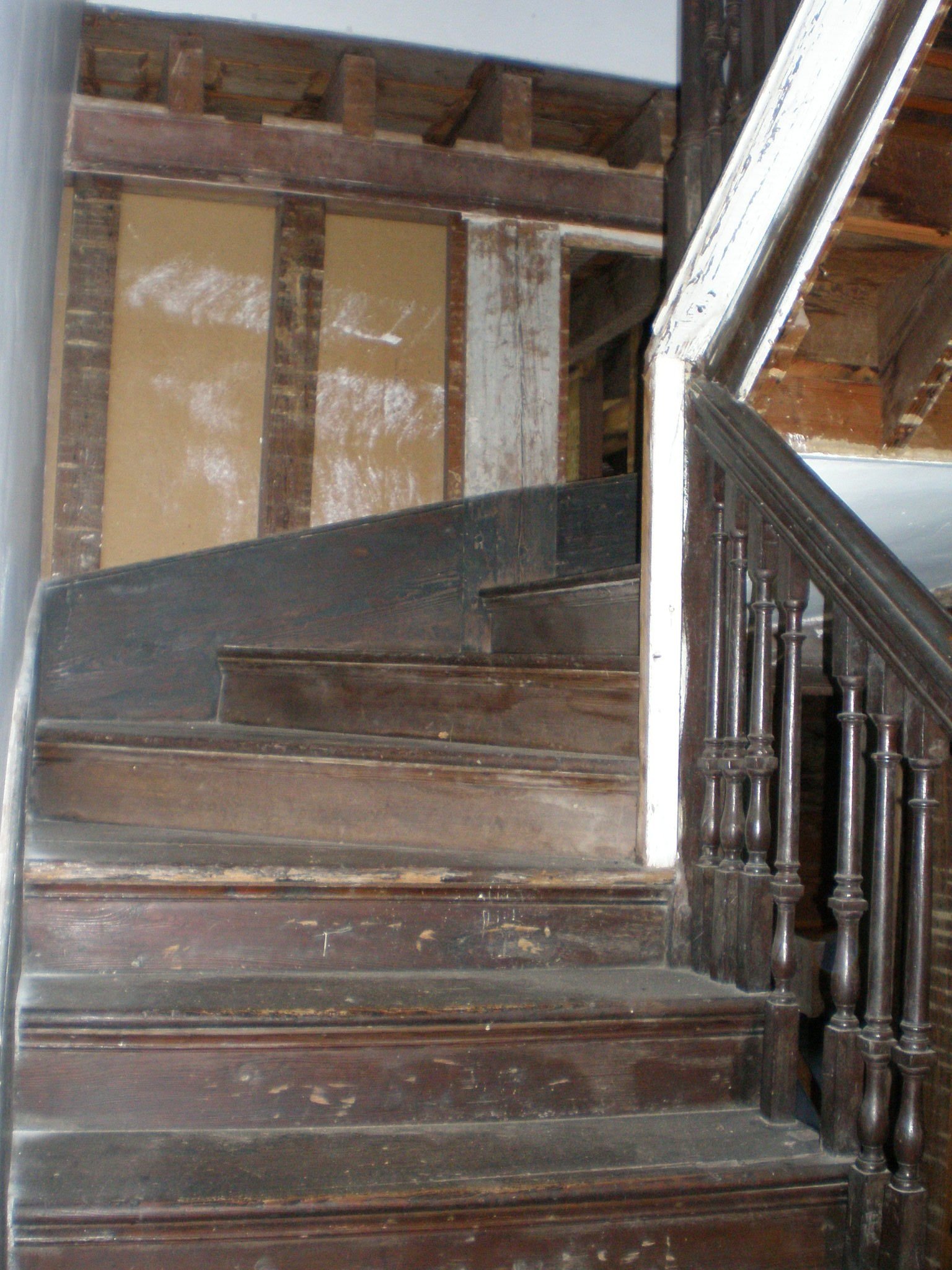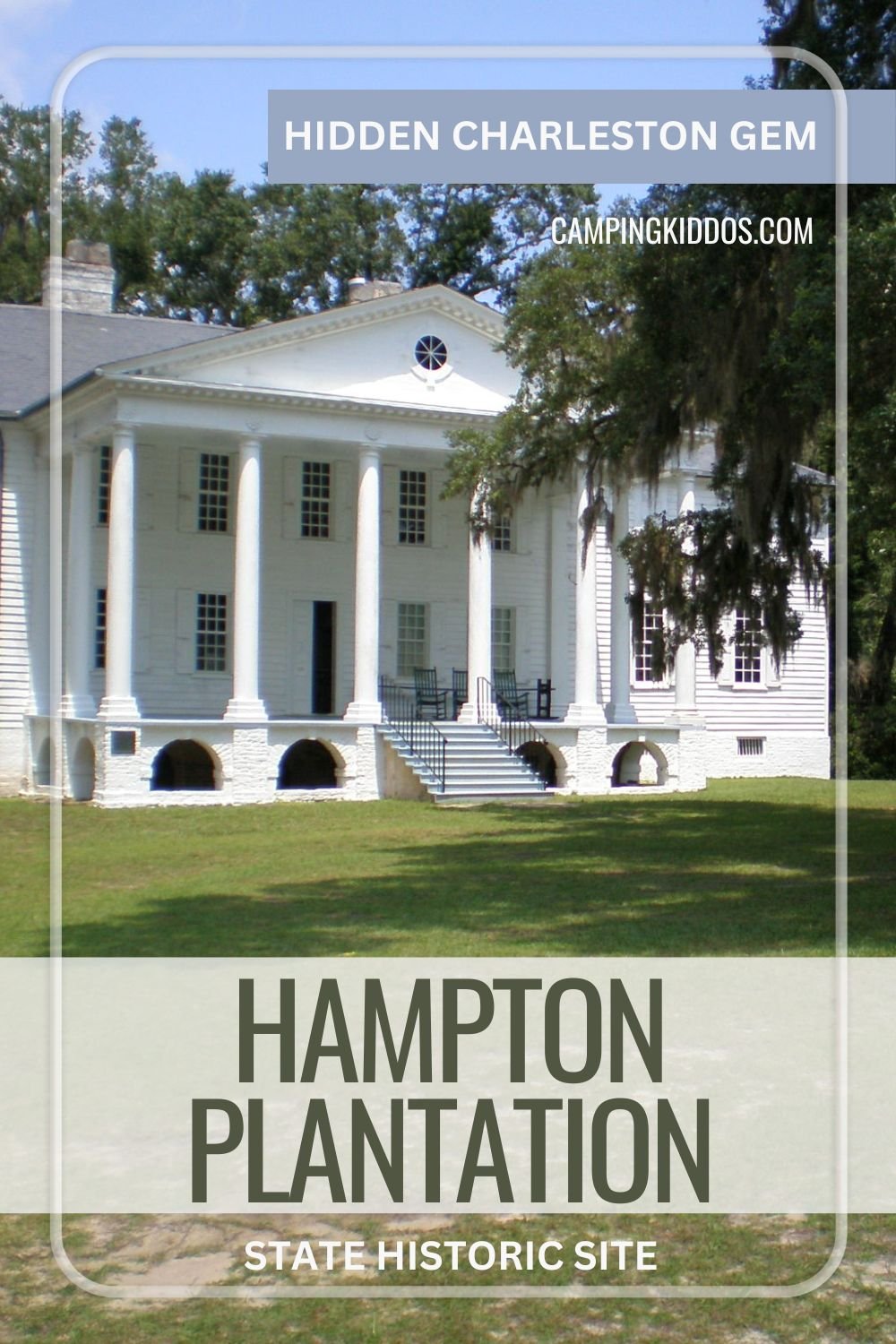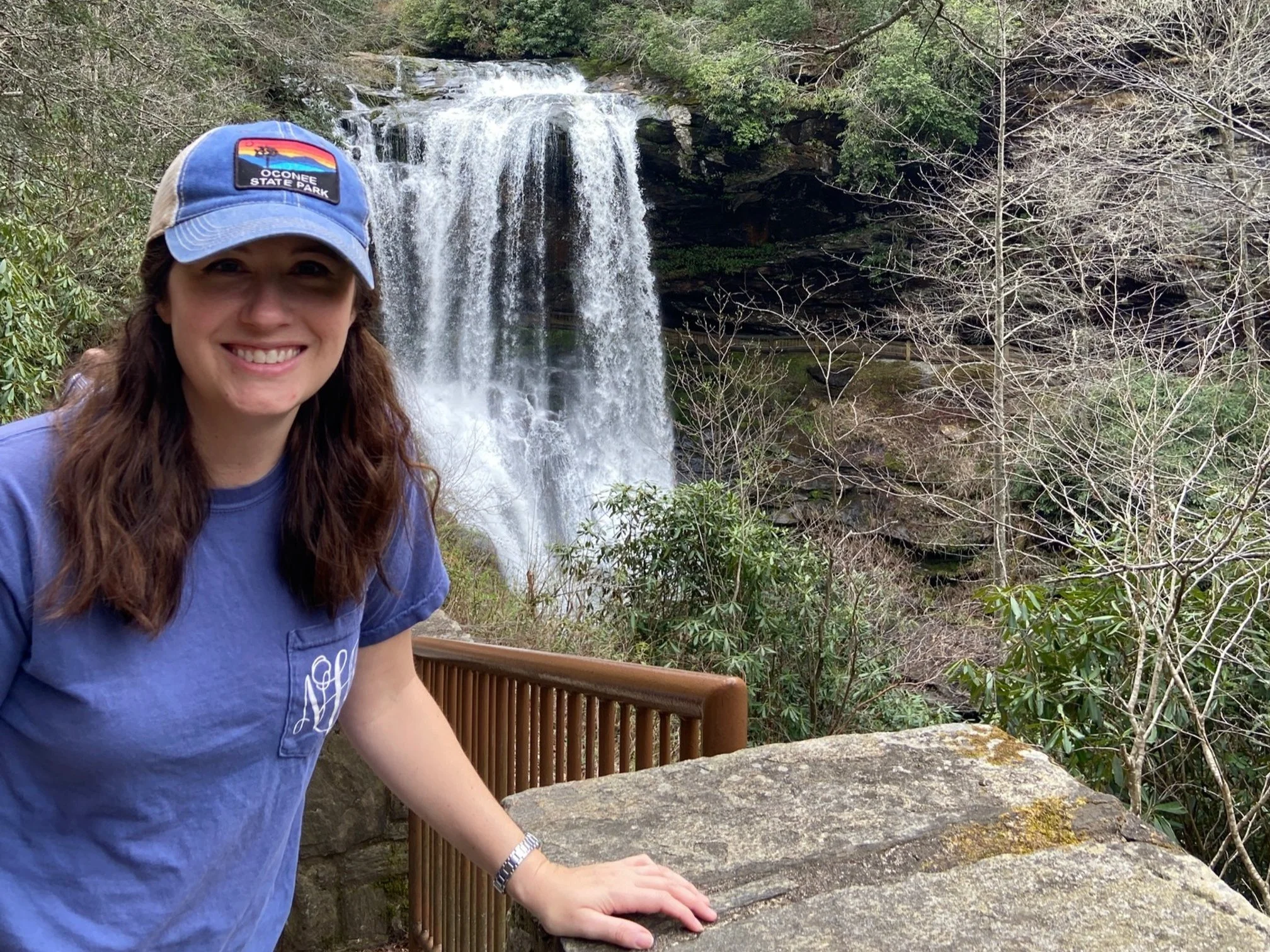Visiting Hampton Plantation State Historic Site, McClellanville, SC
Visiting Hampton Plantation State Historic State should be high on your list of things to do near Charleston, South Carolina.
Located just north of the cute fishing village of McClellanville, Hampton Plantation offers up excellent opportunities for wildlife viewing, outdoor exploration, and local history.
As a Charleston native, I believe that Hampton Plantation is a hidden gem, so leave the hustle and bustle of downtown Charleston and head north on Highway 17.
Below, you’ll find all of the information that you and your family need to have a wonderful day out at Hampton Plantation from things to do, where to grab lunch, and where to find the closest campground.
This post contains affiliates. If you purchase from the links below, I will receive a commission at no charge to you.
Where is Hampton Plantation State Historic Site?
Hampton Plantation is located just north of McClellanville, South Carolina.
McClellanville is halfway between Charleston and Myrtle Beach on Highway 17, making Hampton Plantation an excellent stop on a road trip through this area.
After you pass through McClellanville going north on Highway 17, the turn-off to Hampton Plantation is 7 miles on your left.
You’ll then be on Rutledge Road. Follow this road for about 2 miles, and you’ll see the entrance sign for Hampton Plantation on your right.
You’ll know you’re close when you see the split rail fence on your right.
Parking is free and plentiful on the gravel lot at the end of the entrance road. You can park anywhere along the split rail fence in the parking area, or in front of the ranger station.
The History of Hampton Plantation
Built in 1735, this property is representative of much of the Lowcountry's history in the last 250 years.
Hands-on learning at Hampton Plantation
It is a great example of a Georgian plantation house (one of the best in the state, actually!), and it was a working rice plantation for many years before the Civil War.
The 300 acre property was passed through the Horry, Rutledge, and Pinckney families through the years.
If you're at all familiar with South Carolina history, all of these names will sound familiar as they were at the heart of SC social circles and politics for years.
There's even record of George Washington coming to visit the property during one of his tours of the state! (See more about that below).
The plantation managed to escape any major damage during the Civil War, but (like many of the other large agricultural properties in the South) fell on hard times as the South struggled to find a new identity in the post-war years.
Archibald Rutledge and Hampton Plantation
By the early 1900s, the house was in the hands of the Rutledge family, and a young man by the name of Archibald Rutledge was growing up there.
He was deeply interested in writing, and went on to have a storied career as a teacher and poet.
Although he moved away from Hampton Plantation in his adult years to pursue his teaching and writing career, he often returned to the property during his vacation periods.
Rutledge published more than 50 volumes of poetry--many of which revolved around his childhood at Hampton Plantation--and was named South Carolina's first poet laureate in 1934 for his vision and representation of the state.
Although Rutledge married twice and had 3 children, he felt that such a large property was untenable for modern private ownership due to property upkeep and renovation costs. He willed the property to the state after his death.
It's now a hidden gem of South Carolina history that I highly recommend!
What to Do at Hampton Plantation State Historic Site
There’s always something new to explore at Hampton Plantation!
You can easily accomplish all of these suggested things to do during a one day visit.
If you’d like to delve even deeper into the history, literature, and nature of this site, check out the upcoming Hampton Plantation events.
Throughout the year, the site offers up ghost tours, Christmas candlelit tours, skygazing nights, and more.
Take the house tour.
My daughter on the joggling board at Hampton Plantation
While the grounds of Hampton Plantation are beautiful—and must be explored on your visit—you should also take the house tour to learn more about why this specific property is highlighted in the SC state parks system.
As noted above in the history of Hampton Plantation section, author and SC poet laureate Archibald Rutledge grew up here, following in the footsteps of several generations of his family.
Since Rutledge never lived in the house full-time as an adult, the last real inhabitants were his parents.
That means that this home is frozen in time, and still looks just as it did in the mid-1800s.
Unlike the more grandiose plantation homes like Middleton Plantation and Boone Hall Plantation, Hampton Plantation is not furnished.
While the Rutledge family was very wealthy, you can still see how their lives as “country gentry” was more rustic than the Middletons on the Ashley River in Charleston.
You’ll walk through the ballroom, where you can imagine a fire roaring in the huge fireplace.
You can visit the bedrooms upstairs and imagine how drafty those old rooms must’ve been on a cold January morning.
On one of the house tours, the ranger let us dress up in some of the period replicas of clothes in the attic.
Throughout, the ranger will provide much needed context for each room to help you understand both the Rutledge family and the enslaved population here.
We’ve been on this tour multiple times, and the rangers have always changed their approach to best fit the group make-up that day.
If you let them know you’re interested in historic food, clothing, architecture, etc., the rangers will make sure to provide more information throughout the tour.
Tickets and tour information
For the best chance at getting a solo tour, get tickets for a morning weekday tour in January or February. This is the low season for tourism in Charleston, so you’re likely to have the place to yourselves.
You can buy tour tickets in the small building next to the parking lot.
Tickets are $10 per adult (16 and up), $5 per child 6-15, and free for kids 5 and under.
During the winter—October to February—2 tours are held every day but Wednesday and Thursday. You can choose from a 12 noon tour or a 2 PM tour.
During the spring and summer months, tours are generally held everyday, and 3 tours are offered: 10 AM, noon, and 2 PM.
Walk down the oak allée.
The Washington Oak at Hampton Plantation
When Hampton Plantation was still inhabited, visitors would’ve driven along a now closed entrance road.
This old road, which can still barely be seen under the existing grass, was bordered on both sides by massive live oak trees.
Known as an oak allée, this dramatic entrances were popular on plantations across the South. Perhaps one of the most famous is at Oak Alley Plantations, one of the best plantations in Louisiana.
While the old entrance at Hampton Plantation isn’t as large or as long as others, the beautiful 300-year-old trees are well worth the short walk from the ranger station and plantation house.
Look for the massive live oak closest to the front lawn. This is called the Washington Oak, which is named after George Washington.
When Washington was on a tour of the Southern states during his presidency, he visited Hampton Plantation and marveled at their trees.
When he heard that the large live oak was to be cut down, he intervened and requested that it be kept.
Since Washington saved the tree, it now has a little bronze plaque with the date and Washington’s name on it.
Have a picnic.
We lived in McClellanville, South Carolina, for 7 years when my kids were younger, and Hampton Plantation was one of our favorite places to go.
My daughter with friends on an outing at Hampton Plantation
Since the grounds were free to access, we could pack a quick picnic and head about 10 minutes up Highway 17 for a picnic lunch there.
There are wooden picnic benches just steps from the gravel parking lot and near to the ranger station.
You can also bring a picnic blanket and spread out anywhere on the property if its a beautiful, sunny day.
NOTE: There aren’t any food items here other than a few candy bars and soft drinks in the ranger station, so you’ll need to bring your own lunch.
We recommend grabbing a to-go box from the Bent Rod in McClellanville on the way to Hampton Plantation. If you’d rather a sandwich, the gas station at the blinking light in McClellanville has a reliable Subway.
If you’d like to grab some sandwich fixings and chips, McClellanville has a Dollar General that (usually) has basics like bread, peanut butter, jelly, lunch meat, and the like.
The closest full grocery store is going to be about 30 miles south in Mount Pleasant.
Explore the gardens.
Known as the “Wild Gardens,” this sprawling area is located next to the Mansion.
Unlike the more manicured gardens you’ll find in other Charleston area plantations, the gardens at Hampton Plantation are meant to be raucous and a mimicry of a natural landscape.
Explore the narrow paths to discover beautiful flower beds, live oaks, and stone benches set within the winding garden layout.
If you loved The Secret Garden growing up, this area of Hampton Plantation is a must see.
Hike on the nature trail.
The rice field as seen on the nature hike
This easy 2-mile loop takes you through the heart of the plantation grounds.
As you tour the long abandoned rice field, you’ll learn about the history of the plantation, the enslaved people whose labor made such a lifestyle possible, and the flora and fauna who now call this reclaimed space home.
Keep your eyes open! You might see white tailed deer, owls, lizards, snakes, rabbits, wild turkey, fox squirrels, raccoons and more.
While this hike is great for even the youngest hikers, it isn’t good for strollers as the path is packed dirt with many tree roots in it.
If you’d prefer a ranger-led hike, there’s one every first Thursday of the month.
This property borders the Francis Marion National Forest, where several of our favorite hikes in Charleston are, so add those to your itinerary if you’d like even more hiking!
Explore more of the South Carolina outdoors with these suggestions:
Hampton Plantation State Historic Site FAQs
How much does Hampton Plantation State Historic Site cost?
If you’d like to walk on the grounds and have a picnic, you can do that for free.
If you’d like to take the ranger-led tour, it’s $10 for adults, $5 for children 6-15, and free for kids 5 and under.
What is the difference between a state park and a state historic site?
While the South Carolina state parks system highlights incredible places from across the state, all of the properties are listed as either state parks or state historic sites.
The main difference is that the state parks have camping or accommodations on site, while the state historic sites do not.
The state historic sites focus on battlefields, historic houses, and places of other historic importance that are worthy of preservation, but do not have a campground or cabins attached.
What are the other South Carolina state historic sites?
PIN ME!
There are 8 South Carolina state historic sites:
1) Hampton Plantation,
2) Charlestowne Landing,
3) Colonial Dorchester,
4) Battle of Rivers Bridge,
5) Redcliffe Plantation,
6) Oconee Station,
7) Battle of Musgrove Mill, and
8) Rose Hill Plantation.
What can I do near Hampton Plantation?
Hampton Plantation is less than a 10 minute drive to the adorable town of McClellanville, South Carolina.
This working fishing village is one of the last of its kind on the East Coast, and is also home to a thriving arts community.
Visit the McClellanville Museum, shop at the MAC store, and browse along Pinckney Street.
Where is the best place to camp near Hampton Plantation?
Since Hampton Plantation is a state historic site and therefore does not have a campground, you’ll need to head south about 15 miles on Highway 17 to the Buck Hall Recreation Area and Boat Landing.
There’s a small but sought after campground on the Intracoastal Waterway here.
The sites have water and electric hook-ups with a dump station on site.
For full hook-ups, the closest campground is going to be the Mount Pleasant/Charleston KOA. This campground is on the northern edge of Mount Pleasant, about 30 minutes south on Highway 17 from Hampton Plantation.
Explore more of South Carolina!




